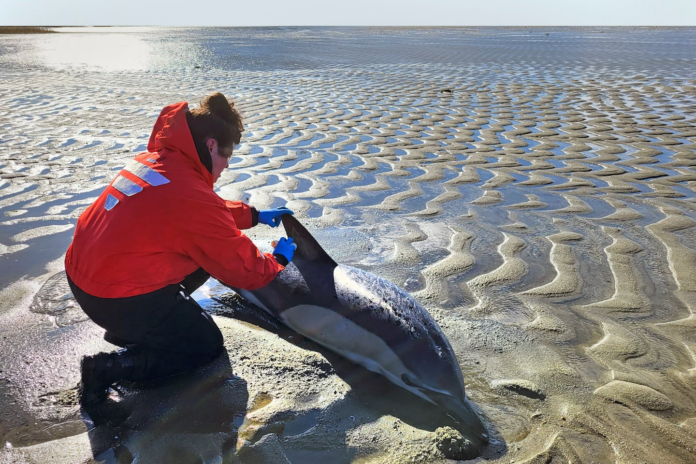But this year is different. The International Fund for Animal Welfare, which responds to marine mammal strandings, said last week it has responded to 342 live, stranded dolphins this year, and that’s five times more than its annual average of 67.
Cape Cod, the Massachusetts peninsula beloved by beach tourists and seafood lovers, has a long history of marine mammal strandings. That is partially because of dramatic changes in the tide that sometimes trap wayward dolphins if they swim too close to shore.
An unprecedentedly bad year for beached dolphins on Cape Cod might have to do with warming waters changing the availability of the animals’ food, said scientists hoping to curb the strandings.
An already bad year got worse earlier this month when the organization was inundated with calls about beached dolphins. More than 50 of the animals were stranded on multiple beaches and waterways in the span of a week, the organization said.
Get Starting Point A guide through the most important stories of the morning, delivered Monday, Wednesday, and Friday. Enter Email Sign Up
The massive number of strandings has stretched the group’s resources and supplies, said Brian Sharp, marine mammal rescue team lead for the organization and a biologist by training. Scientists are still trying to determine what is causing the strandings, but they have noticed that the small fish the dolphins eat in high numbers have been swimming close to the shore, he said.
Advertisement
The dolphins seem to be following that food source and getting themselves in jeopardy, Sharp said.
“Any effect of climate change on ocean temperature, salinity, is going to affect the prey resource of the fish,” he said. “That as part of the food web is going to have kind of that ripple, that cascade effect throughout the food web, which eventually leads to marine mammals.”
Cape Cod is located near important dolphin feeding grounds, and the peninsula is popular with summer whale watchers because of its diversity of species. Most of the stranded dolphins have been common dolphins, Atlantic white-sided dolphins, Risso’s dolphins, and bottlenose dolphins, Sharp said.
Of the 342 stranded dolphins, 293 were able to be released back into the wild, Sharp said. More than 90 additional dolphins were found dead upon stranding, he said.
This year’s strandings included a mass stranding event of more than 100 dolphins in the summer that rescuers said was the largest event of its kind in recorded US history. The Cape can be difficult for the animals to navigate because of its sloping sandbars, hooked shape, and sticky mudflats.
Advertisement
While the factors influencing the strandings are complex, a changing climate is clearly driving prey and predators to new areas at times of the year they were not previously expected, said Regina Asmutis-Silvia, executive director of conservation group Whale and Dolphin Conservation North America.
“We have had noticeable unseasonably warm temperatures on land lately around Cape Cod to remind us we are facing changes in the climate. But those changes don’t stop at the shoreline. They are being felt in the ocean too,” she said.
This month’s rescue operations were made difficult by rough winds and surf and cold weather, the International Fund for Animal Welfare said in a statement. The dolphins that stranded this month might have been part of the same pod, or group, but why the group became stranded is still unclear, the organization said.
“Though Cape Cod has always seen more live dolphin strandings than anywhere else in the world, the numbers this year have reached historic highs,” the group said in a statement.



